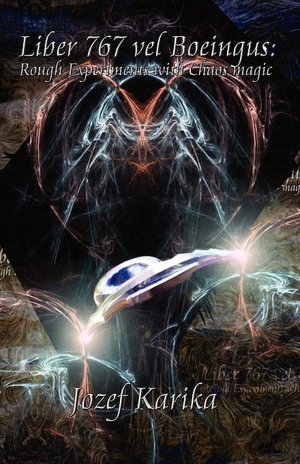
There are quite a few unnecessary hurdles presented in this book, and they truly detract from the content itself. How much is due to the author and how much to the editor/translator is difficult to determine.
In the introduction, Taylor Ellwood mentions the three years he spent working closely with Karika in order to “. . . make the English version clear, while preserving his voice.” Frankly, he fell short, I believe on both counts. The book reads like a bad Master’s thesis - lots of complex phrasing and buzz words, but no proof-reading after the initial blast. Take this gem from Chapter 1: “Formulation of volitional imperative in the magical act is just the expression of your own approach to magic.” As the book goes on, the grammar becomes more questionable, with missing verbs and articles, as well as non-sensical or even incomplete sentences, making it a challenge to find the author’s meaning at all. Sometimes, it looks as though the original text was simply run through BabelFish and set on the page unaltered.
Lazy translation cannot excuse everything in this book. In all fairness, it can be difficult to decide if it is the author or the translator who fell short so often. Again, in Chapter 1: “. . . try testing it on children and retards . . .” Of course, in the next 2 paragraphs, “retards” are re-labeled “idiots.” The F-bomb is thrown into the mix in the most ineffective contexts.
While I realize Chaos magic pulls from many different areas, Karika seems especially drawn to fiction, specifically Lovecraft, Lord of the Rings, and Hellraiser. He tosses out tables of demons and “tunnels” with little explanation of the source, so if you are unfamiliar with the specific system he is referencing, you will start to feel a bit lost. Add overkill to the mix, when a list of seventeen psychologists is provided - within a single sentence - to support the assertion that there is no such thing as the unconscious mind.
In recommending methods for overcoming the psychical block that prevents one from causing physical harm to others, Karicka recommends immersion in martial arts, to the point where you have no qualms or reservations about breaking a limb or dislocating a shoulder of your opponent. Another method he suggests is “systematic cruelty to animals.” Explanations as to why this is effective follow, however, this added another bias to my own thinking as I continued to read.
Putting aside the bad grammar, ineffective translation, and overuse of buzz words, this is still less a book of Chaos magic and more of a chaotic book. Most chapters resemble diary entries talking about incidents in the author’s life, or more frustratingly, referencing incidents without actually explaining them. Even the promise of more in-depth analysis falls short. Chapter 24, “How Do Pop-Cultural God-Forms Work?” is essentially a 350 word essay on how Karika admires Taylor Ellwood’s ideas, and how Master Raistlin from Dragonlance is something of an alter-ego for him. All fine and good, but it never addresses the chapter heading.
All in all, I found this book terribly uneven. Anecdotes are related with more of a “look at me” sense than a real illustration of a particular point. Complicated listings of random magical elements are interspersed with musings on “how to get the girl I want.” It is what I would have expected from a teenager discovering his newfound independence, rather than a 15-year practitioner of any sort of magic.
~review by KatSai
Author: Josef Karika
Megalithica Books, 2009
pp. 283, $21.99
